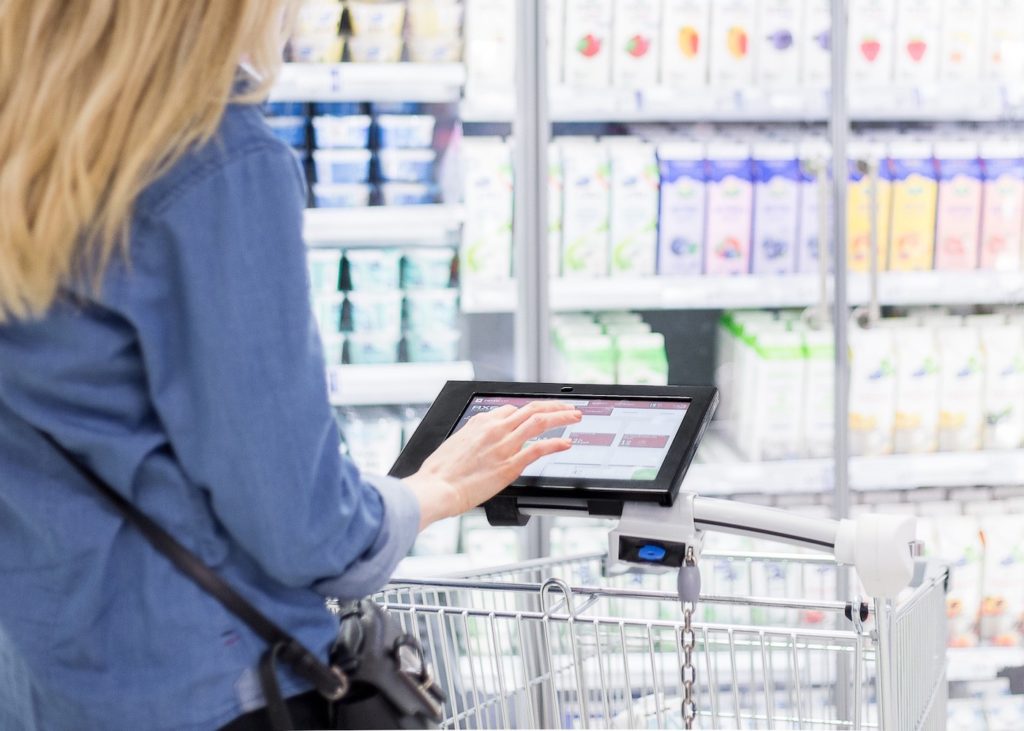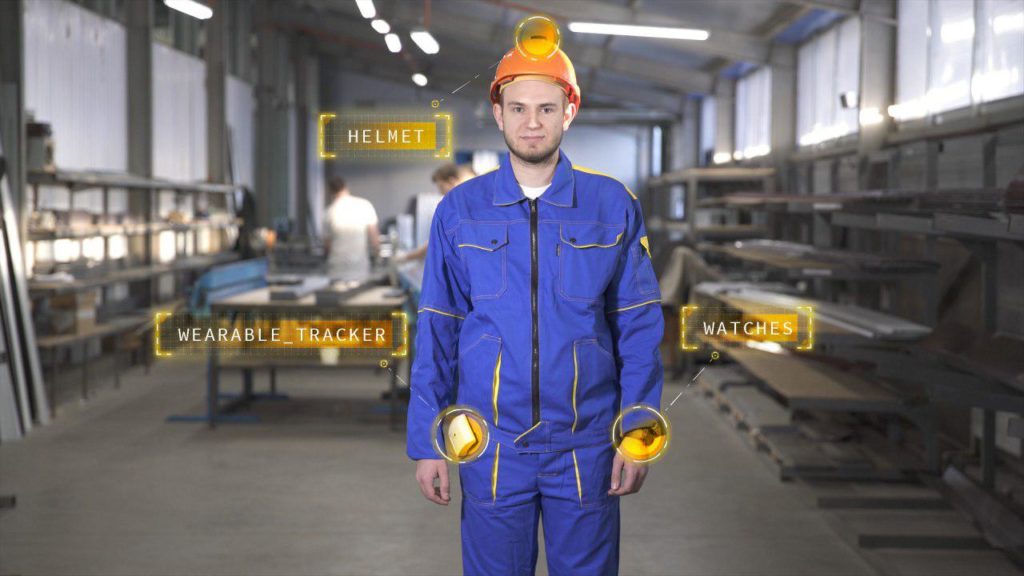The indoor positioning market reached $6.92 billion in 2017, and is estimated to grow to $23.6 billion by 2023 at a CAGR of 27.9% (according to the MarketsandMarkets research). A rise in smartphone penetration and a huge amount of time people spent indoors (nearly 80-90% of all our time!) were the two most significant drivers of indoor positioning sector development, contributing to the increasing demand of indoor navigation technologies in retail, manufacturing, healthcare and other spheres. The most powerful players on this market are Google, Cisco and HERE, which provide so called box solutions. However, a lot of customers are constantly looking for more efficient and personalized products, which opens an opportunity for small technological startups to break into the market and perform sophisticated user-cases. So, how will indoor positioning transform industries in the next few years?
RETAIL – a mix of online and offline shopping experience
A combination of two realities, offline and online, is one of the most exciting ideas for retailers throughout the world. They all want to be like Amazon, a shop without salesmen and cashiers, where customers could choose goods and just go away. Nowadays a lot of retail companies are looking for cutting-edge technologies, capable of enhancing customer impression and complementing it with the online experience.

A well-established Finnish retailer is an example. The company already uses a sophisticated shopping assistant, developed by Navigine and Smartcart, which helps consumers in product searching and choosing. This assistant looks like an ordinary shopping cart equipped with a tablet. A customer takes a cart, chooses a recipe (or downloads his own shopping list) and starts a guided tour through a shop. The advanced navigation system and smart notifications about special offers and store specific information save customers more time and money, as well as provide a personalized shopping experience. As a result, this solution enhances both retailer’s revenue and market share, increases the average bill by 6% and encourages brand awareness and efficiency of marketing and promotion campaigns. The next possible step is automation of payments. While a customer puts products into a smart cart, it calculates a total payment and automatically charges the customer’s credit card. Both shoppers and retailers will benefit from such a system. It will save a lot of time for the former and a lot of money for the latter.
The penetration of indoor positioning technologies in retail will continue this year. I assume that this process will be more smooth than explosive.
MANUFACTURING – a digital a twin
Contemporary enterprises use a wide range of different digital technologies and tools, such as 3D-printing, artificial intelligence, global automation, robotics, Internet of things, real-time monitoring systems, that are highly valuable for safety enhancement and costs cuts. Forbes predicts that the total revenue of all companies, using so-called Industry 4.0 technologies, will have reached $1.5 billion by 2020, moreover, the efficiency of such enterprises will see a 7-fold rise.
Well-established machine-building holding is an example. A customer was looking for a solution for cost reduction, improving business efficiency and decreasing risks to workers’ lives and health. And we proved that nowadays such problems could be easily solved with the use of advanced digital technologies and innovative software. All staff and vehicles were equipped with smart helmets with BLE protocol support. So the manufacturer obtained an access to a real-time motion system which recorded every worker’s history of movements, marked the building into zones to track movement inside/outside each zone and the number of hits in the zone, facilitated search for employees on the building map. The common web interface ensured an opportunity to correct daily tasks in real time and to react to work process and safety protocol violations immediately. Due to improvement of work discipline, the overall labor efficiency increased by 20%. Labor costs also declined owing to reducing overpayment for fake working hours.
Managers would like to know exactly what is going on in their factory in each period of time. It particularly concerns all moving objects, including people, vehicles or components. And a digital twin serves these purposes the best. Such twin is usually based on big data collected from a production space including such nuances as vibration frequency and sound level, serves these purposes the best.
Healthcare – big size, huge problems
Indoor positioning systems are in a great demand in hospitals and clinics, especially in USA and Europe. Some buildings comprise thousand of square meters, dozens of floors full of thousands of people, both personnel and patients, and are a real challenge for management and optimization. The indoor positioning has an opportunity to make life easier and to enhance financial efficiency, calculating the hospital’s overall financial loss from every time a patient is 15 minutes late. There are three most obvious challenges for indoor positioning technology in healthcare, such as equipment monitoring and control, security enhancement and reducing waiting time for patients. Estimates indicate that hospitals will purchase from 10% to 20% more equipment than actually required due to a lot of cases of misplacing and loosing these high cost equipments. In fact, the cost per bed in hospitals has risen on 90% in the past 15 years to $3,144.2, and one of the reason is that costly assets being regularly misplaced or left in disuse. Navigation within a hospital could be tiring and confusing both for staff and patient. Indoor-positioning technology provides a person with an individual guide and identifies the most appropriate route. Moreover, BLE-technology cuts waiting time, therefore ensures a better experience and higher confidence in the healthcare provider. The last but not least merit of indoor navigation system is an opportunity to control physical access to various wings or offices. Managers can grant or restrict access on an individual basis, adding information to an employee’s real-time keys. The penetration of indoor navigation in the healthcare market has already continued in the USA for three years. Last year it started in Europe too.
Gadgets –live not by smartphone alone
Although smartphones were the only providers of positioning just a few years ago, nowadays a wide range of wearable gadgets (such as smart helmets, trackers, wristlet etc.) support this technology too. Today gadgets are so popular and widespread that producers of these devices are constantly looking for new features and functions. And navigation is the most obvious technology for implementation. I believe that we will all see functional devices with positioning features already this year.
Logistics – a question of business efficiency
Logistics companies need to be very efficient in all operational processes, such as searching of packages, gathering orders, transporting and delivering them. It is crucial to know how much time an employee spends on finding every item, collecting all of them and putting them into a box, how and where he or she moves in the process. Indoor positioning technologies ensure an opportunity to create a real-time motion system, to facilitate searching for employees and controlling their working load, as well as to analyze people’s and vehicles’ routes and to provide data for an informed management decision.
 There is a wide range of sophisticated technologies intended for facilitating logistics processes and enhancing business efficiency. Autonomous drones are an example. Modern logistics vehicles are able to navigate independently through an open space, to assemble and disassemble big units of storage, to move them from one place to another, to put boxes on pallets. Technologies implemented in such cars are both really sophisticated and really expensive. RFID and scanners are the most widespread tools for people’s positioning. These small radius technologies register an object’s location while it passes by. However, RFID fails in the reconstruction of the whole trajectory. Bluetooth is the more appropriate and more advanced technology, able to identify not only people’s but also things’ and vehicles’ tracks in real time. And logistics companies commence to adjust and implement this technology.
There is a wide range of sophisticated technologies intended for facilitating logistics processes and enhancing business efficiency. Autonomous drones are an example. Modern logistics vehicles are able to navigate independently through an open space, to assemble and disassemble big units of storage, to move them from one place to another, to put boxes on pallets. Technologies implemented in such cars are both really sophisticated and really expensive. RFID and scanners are the most widespread tools for people’s positioning. These small radius technologies register an object’s location while it passes by. However, RFID fails in the reconstruction of the whole trajectory. Bluetooth is the more appropriate and more advanced technology, able to identify not only people’s but also things’ and vehicles’ tracks in real time. And logistics companies commence to adjust and implement this technology.
Power industry – technology for safety
Not only malls, hospitals and manufacture factories, but also power plants could benefit from indoor positioning. Energy companies usually control a lot of remote objects such as small and big electricity stations, as well as administrative buildings. All power plants need to be technically maintained on a regular or sometimes emergency basis. It is crucially important to do all maintenance work in accordance with technical regulations and instructions. And indoor positioning could assist management of power companies in controlling these processes.
A case of MOESC power company is an example. Together with Spaceteam Navigine implemented an advanced indoor/outdoor navigation system which monitors movements of service workers through an electricity station. A special mobile application distributes working tasks, based on teams’ location, and analyzes workers’ tracks. As a result, the safety level was improved and incident reaction time was decreased due to staff positioning and wayfinding, real-time tracking and task scheduling features.
So, what?
Business spent some years on testing and evaluating the advantages of indoor positioning technologies, and right now the majority of companies from various industries have embraced the idea and value of indoor navigation. This year businesses will look for solutions facilitating and reducing the cost of indoor positioning systems implementation. The most significant obstacle for scaling of this technology required hardware installation. A navigation system today is a clever mix of software and hardware (BLE-beacon installed and special gadgets, like smartphones, wristlets, tablets or helmets). We all believe that new Bluetooth 5 technology and new LTE features will push a revolution in the indoor positioning market.









